I wrote a post for Pollinator Week last year, highlighting the diversity of species we find here on the farm. I didn’t plan to write another post this year, but this week I feel compelled to.

Yellow-faced bumble bee (Bombus vosnesenskii) on native Coyote Mint (Mondardella villosa) – Click any image to enlarge
Before I get to my point, first I want you to imagine you’re a pollinator, a bumble bee, perhaps, like the one pictured above. Early every morning you set out to find your daily source of food. There are no weekends, no days off. Your survival, and the survival of your offspring, depends on your ability to gather enough food.
While out scouting for sources of food, your priorities are locating good sources of nectar, and pollen. You’re completely unaware of the hazards that may befall you.
It’s a beautiful late spring day when you encounter a stunning grove of trees that are laden with blooms. It’s a welcome sight as many of the spring flowers are now fading, as spring gives way to summer. You buzz from flower to flower, bloom to bloom, shoulder to shoulder with a myriad of other bumble bees who are feasting along side you.
After sipping nectar for a while, you suddenly feel weak, and disoriented. You find yourself rolling on the ground below, looking up through the trees, unable to right yourself, and incapable of flight. Then all goes dark. You felt fine this morning. Suddenly, you’re dead.
It wasn’t a natural death. You were poisoned. Your life needlessly cut short. There beside you, on the ground, are 50,000 others, just like you.
Actually, you don’t have to imagine that scenario at all, as earlier this week, in Wilsonville, Oregon, that’s what befell a local population of bumble bees, in what now has the distinction of being the largest known mass bumble bee death on record.[1]
Weak, disoriented, dead and dying bumble bees, as far as the eye can see. The culprit, reported by the Xerces Society, was the application of a pesticide, known by the trade name Safari® (Dinotefuran)[2]. According to the manufacturer’s website this is a “super-systemic insecticide with quick uptake and knockdown” and it reportedly “controls a broad spectrum of ferocious and invasive pests“. Unfortunately, like most broad spectrum insecticides, it also kills non-target species, including bees.
This horrific event appears to have been precipitated by the misapplication of a systemic insecticide by a landscaping contractor, during the period of bloom, to at least 55 European Linden Trees. This species of tree, much like our native Bay Laurel trees, is highly susceptible to aphids during the spring and summer months, which can produce copious amounts of honeydew that falls to the ground below. It’s a nuisance, and we deal with it almost every summer here on at least a few Bay Laurels, but it’s hardly enough to justify this sort of mass casualty. We ignore it, and occasionally have to spray down a walkway so it’s less sticky.
This incident is impressive by the virtue of the numbers of bees affected in a concentrated area. That’s what grabs the headlines, but every day this same egregious act is committed on numerous farms, and home gardens, all across the globe. We’re only shocked this time because all of the dead bodies were raining from the trees at a single location. The few bees visiting an insecticide laden prized rose bush aren’t noticed when they fail to return to their hive or nest.
I don’t say that to take away from the horror of this week’s event in Oregon, but to cause at least few who might read this to maybe stop, just for a moment, and consider what’s going on in their own gardens. I know a number of gardeners personally who still spray their plants at the first sight of a bug, or a hole in a leaf. It’s simply not necessary.
Pollinators, too numerous to count, are killed, some intentionally, but many accidentally, in home gardens, and on commercial farms, every year. Systemic and foliar applications of broad-spectrum pesticides in home gardens alone do the far more harm to struggling local pollinator populations than this single isolated incident.
You may simply be striving to rid your garden of aphids, or a handful of cucumber beetles, but bees are insects, and butterflies are insects. Lady beetles, and lacewings too. It’s interesting though, because the usage labels on most bottles of home-use insecticides fail to mention that their product is also guaranteed to kill the beneficial insects in your garden as well. Bugs are bugs, and it’s almost impossible to kill one bug species without risking harm to another. My question is, why use insecticides, especially on ornamental plants like the Linden trees, at all?
We keep hearing terms like ‘colony collapse’, and we know that pollinators are struggling for a host of reasons ranging from resource availability, to pathogens, and pests, and yet more than 17,000 pesticide products are available for sale on the US market[3]. Even if pesticides aren’t the sole source of the challenges our pollinators are facing, they’re certainly responsible for compounding it, significantly! If you’re still using insecticides, you’re part of the problem.
Spraying even a single prized plant because of a few unsightly aphids, or beetles, can result in non-target species deaths. Would you walk up and kill this butterfly, on purpose? No? Then why would you poison its food?
For years I’ve taken the approach that if a plant is struggling too much to survive in my garden, then it simply doesn’t belong there, and it finds its way to the compost pile. When searching for a replacement I’ll then try to find something more suited to growing in its place. I certainly don’t have the time to prop up high-maintenance plants that struggle to thrive here.
If plants are weak because their needs aren’t being met culturally, I strive to correct it, as weak plants are more vulnerable to pests and disease. Meeting the cultural requirements for a plant can help it fend off pests, and pathogens. After that, if it still struggles, it’s gone.
If you’re a gardener, and you plant a garden full of blooming plants that attract beautiful butterflies, or birds, to feast on the nectar and pollen, then why would you poison that resource?
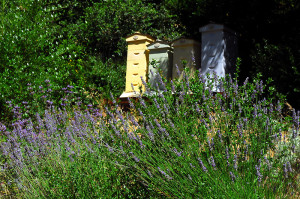
Note the bee hives in the background. Can you imaging what would happen if I used an insecticide on this lavender?
We garden organically here, and don’t apply pesticides or herbicides to anything growing on the farm. We don’t do this to create more work for ourselves, we do it to protect all of the species of beneficial insects here on the farm, as well as to protect our soils, and our watershed.
It’s been frustrating at times, and has taken time to achieve a relative degree of balance in the gardens. Some days the pests gain a foothold. You should have seen the aphid encrusted fava beans last spring! Other days though their predators overwhelm them. I watched clouds of soldier beetles this spring swarming around the tips of our cherry tree that had an aphid infestation. The aphids now are almost completely gone, and I didn’t do a thing.
We’re certainly not pest free, not by any measure, but we do have a tolerance for damaging insects on plants. Nature has an amazing network of predators and prey. For every aphid, there is an adversary, like the Syrphid Flies we’ve posted about previously, but if we indiscriminately treated every plant with a few unwanted insects, we’d destroy the entire fabric of that network.
This morning I was watching a cluster of aphids and ants on the stem of a rogue thistle, and noted a number of almost imperceptibly small flying insects hovering nearby.

The hovering insects are predatory wasps, and barely larger than the ants that are defending the aphids
When I looked more closely I could see they were some type of predatory wasp, and are clearly attracted to the presence of the aphids. I could spray the aphids, but why? The wasps are doing exactly what I want them to do, and if I leave them alone, maybe we’ll have less aphids next year. Even if I had sprayed the aphids with a seemingly harmless soap solution, I might have also knocked out some of these wasps. Beneficial insects are necessary allies on organic farms, and they should be considered the same in home gardens too. Quite honestly, I’m more intrigued watching the interaction of these predators, and their prey.
All the photographs, with the exception of the solider beetle, in this post were taken by me this morning, in less than an hour. Our gardens are very much alive, and we’re proud of that. It’s gratifying to walk to the vegetable garden area in the mornings and be distracted by so many insects along the way. However, although all of the bees, and butterflies, are safe from toxins here, their foraging ranges extend far beyond our own property lines.
I can’t control what others do on their properties, so who knows what hazards may befall some of these insects once they move beyond the flowers here. It’s our responsibility, however, to do our part to protect our local pollinator populations, and to try to educate, and encourage, others near the farm to do the same.
I would like to think that a massive die-off of 50,000 bumble bees might catch the attention of at least a few gardeners who continue to clutch onto their bottles of pesticides, and perhaps change their mind. If you’re still using pesticides in your garden, all I ask is that you ask yourself, why? Do you have non-toxic alternatives available to you before reaching for a toxic solution? What is your ‘prized rose’ really worth? Is the damage to that leaf really so intolerable?
Conservationists are now scrambling to cover the trees that I mentioned in the beginning of this post with a mesh to help prevent more bees from blundering unsuspectingly into the toxic Lindens[4]. As you can well imagine, it’s a herculean task to cover that many 30 foot tall mature trees, but the trees are still blooming, and the flowers are toxic, so it’s necessary to prevent more bumble bee deaths. I can only hope it’s successful.
In the meantime, other than avoiding the use of pesticides in your garden, you can help with local pollinator conservation efforts through the Xerces Society. They have a number of citizen science projects you can participate in, including an upcoming Citizen Science program, ‘Bumble Bee Watch’, launching in July of 2013[4]
They also have a Pollinator Protection Pledge that you can sign, online, to show your support for pollinator conservation, and Pollinator Week would be a perfect time to make that pledge. All you have to do is agree to the following:
- Grow a variety of bee-friendly flowers that bloom from spring through fall.
- Protect and provide bee nests and caterpillar host plants.
- Avoid using pesticides, especially insecticides.
- Talk to my neighbors about the importance of pollinators and their habitat
We signed the pledge this week. Will you?
———————
[1] Xerces Society: Mystery Bee Kill: Causes Being Sought
[2] Xerces Society: Pesticide Causes Largest Mass Bumble Bee Death on Record
[3] Pesticide Action Network: Pesticides 101 Primer
[4] Pollinator citizen science projects through Xerces Society and their partners






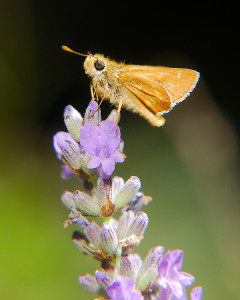

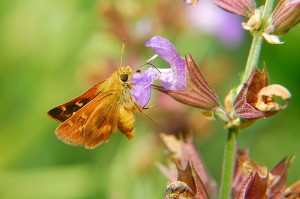

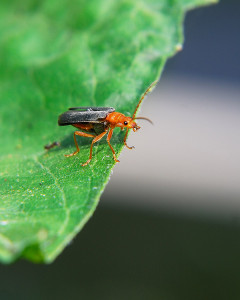

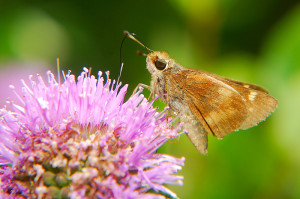









Clare, you’ve written an informative and beautifully illustrated post. I signed the pledge last year and also bought a cool yard sign!I live on a busy street and it’s another way to help educate the neighbors.
gail
Thanks, Gail. I’ve been asked a few times why we have the Certified Wildlife Habitat, Bee Friendly Farm, and Monarch Watch signs on the farm, and my response is always “so you’d ask about them”…they work! I’m always happy to discuss why we do things the way we do here, and always seize the opportunity to turn curiosity into a teaching moment!
What a disturbing and thoughtfully written post. I had not heard about the bumble bee deaths in Oregon, and it makes me wonder how much longer we can continue to kill off masses of bees before we have no food. I don’t use any insecticides. Like you, I usually just watch and wait for the ‘good’ bugs to show up. I’ve had a terrible infestation of aphids on my gaura this year. But the ladybugs showed up and took care of them. I love that you took all those photos within an hour. It’s wonderful to have a garden that’s truly alive.
With patience, it is always interesting to see who shows up in the garden to feast on an overpopulation of pests.
There are so many issues confronting bee populations, both honey bees, and native bees, that if we stopped weakening them with unnecessary pesticide-overuse, maybe they’d have more strength to recover. Humans just need to learn to grow smarter!
Great post! We are organic here too and oddly we are not seeing honeybees in the numbers we did in previous years in our garden. Last year we saw them all over our blooms and at the bird bath drinking. Oddly they were out in February when the cherry trees where blooming but I didn’t see any this spring. I don’t know where there hive was so maybe something happened to it? Sad! I love seeing the insects and variety of pollinators, especially native ones interacting in our garden. I am always learning more about them!
Local honey bee populations do fluctuate year to year. In this area it’s been a particularly bad year for honey bees. Even our own hives aren’t nearly as robust as they were last year. I think our record lack of rainfall as significantly impacted food resources here, and both honey stores, and hive populations, seem lower as a result. I hope you see a resurgence in your local honey bees next spring!
Well said Claire! You’ve forgotten one important reason not to use pesticides: it’s more work! Spending the time (and money!) trying to figure out which of the dozens of products is the right one, and the time to actually apply the stuff — I’m too lazy for that sort of effort.
Some people just don’t think about the fact that they’re covering their homes and gardens with nasty poisons. It just doesn’t make sense even on a selfish level.
(This reminds me though: Japanese beetles should be here any day now. Time to get my bucket of soapy water out!)
It is an absurd amount of extra work. I almost mentioned in regards to our aphids on the cherry tree that I took the “lazy farmer’s” approach to management 😉 Although honestly, I think it’s more a case of not seeing the need to spray them, as the damage is primarily cosmetic, and I always have a long list of more important things to do! Good luck with your Japanese beetles!
One of the big pleasures of sitting out in my garden at this time of year is the abundance of pollinators — bees, butterflies, and hummingbirds, among others — busily at work there. In my many years of battling the iris bud fly, I have sometimes been tempted by the thought of using a systemic insecticide to eliminate this pest; but I have resisted, and this post reminds me of the benefits I would have lost if I had succumbed to that temptation. And this year, I’ve had very little bud fly damage among the irises, suggesting that maybe my manual efforts are finally paying off.
It is tempting sometimes to reach for a more immediate solution. I think most gardeners that use pesticides at home just want the ‘problem’ solved, quickly. They don’t realize what the long-term ramifications are as a result of also killing the beneficials in their gardens too. Garden predator and prey populations are always in flux, and there are times when the pest numbers seem to get a little out of control, but with patience, most of these problems are relatively self-limiting. Some of it comes down to how ‘perfect’ one needs one’s garden to look 😉
What a wonderful and informative article Claire though a catastrophic demise for those bees.
I leave the aphids alone in my garden and just let the birds and the insects take care of their numbers.
This year has seen a greater number of gardeners and commercial businesses in the EU become more aware of how ‘over the counter’ insecticides are killing our bee populations thanks to Avaaz and their petition. They’ve only achieved a two year ban on some chemicals so far … but that’s a start as these chemical companies have so much power and authority.
http://www.avaaz.org/en/save_the_bees_global/
You mentioned that in the USA there are loads of pesticides available while here in the EU we are very much restricted in what we can buy and thanks to Avaaz even more products were taken off the shelves this February.
Unfortunately I guess that this landscaper had a licence to use products that most members of the public have no access to (that’s what it’s like here in the UK but I’m not sure it’s the same in the US).
Hopefully public awareness will increase due to what happened in Oregon.
You’re lucky to have more stringent controls, Rosie. Here we seem have a heavily pesticide-dependent culture.
American agriculture on the majority of farms is heavily dependent on the use of herbicides and pesticides to prop up a multi-billion dollar GMO crop production system in this country. I remember traveling through England in the 1990s during a big European push to get certain GM crops banned for use. I thought it was interesting that there was relatively little noise about it here at the time. Here though the majority seem oblivious to how their food is produced, it’s why companies like Monsanto, Bayer, Valent, and Syngenta are as large as they are, and they lobby hard in Washington to maintain that power.
Small, organic, family farms, are too small to take on these corporations head-on, so I think our best strategy to keep growing, and keep educating the public, making them aware, so they can make informed purchasing choices and perhaps help to drive change through commerce.
For home gardeners, I don’t think they should have access to rat poison any more that they should have access to 99% of the garden herbicides and pesticides that are available at the local hardware store. I hope that eventually we’ll catch up with Europe here, but I doubt it will happen overnight, unless we get the right individuals elected in Washington.
Thank you, Clare, for contributing to our education about bees and other beneficials! This is a great post. I learned about the bee massacre at a honey tasting/garden tour/talk at the SF Botanical Garden yesterday, given by Robert MacKimmie of City Bees. It was an eye-opener about the lives of bees and the challenges they face. He also pointed out that we are coming up on “dearth” season, when the flush of flowers is ending, and how important it is to have late-season blooming flowers in the garden.
We’re expecting the dearth to be particularly bad in this area this year as we’ve had no significant rainfall since January. As we live in a wildland area, most of the forage for our bees is native forage. Most of our blooming plants are dormant by the end of July. Urban bee have a great advantage over ours (assuming no pesticides) because many people maintain numerous gardens over a relatively small area throughout the year.
Many of my more wild native flowers simply didn’t come up this year, or the blooms they did produce were sparse. Usually our deerweed (Lotus scoparius) blooms for weeks, but it seemed the flowers were mostly gone in half the normal amount of time, and the bumble bees love them.
A number of beekeepers we’ve spoken to are already feeding their bees, and our colonies are noticeably weaker this year. We’ll need to do another hive inspection soon to ensure the bees have enough honey stores to build up their populations for the autumn. We didn’t have to feed at all last year, but I suspect this year, if we want our colonies to survive, we’ll have to.
An excellent post indeed! For me the great heartbreak is that I’m attempting to plant what attracts pollinators, but my neighbors could care less. They each use mow-and-blow guys (I won’t call them gardeners) who are primarily trying to “do” as many gardens as possible in a day so they can make a living. And sadly, a few squirts of herbicide / pesticide will always do a faster job than some handwork.
I wish I could have each of my neighbors read your post (and maybe one day they will).
‘Mow-and-blow’, a perfect description. Our last neighborhood had rules about grass height, and plantings in the front yards, and everyone had one of those ‘non-gardeners’. The pounds of spray, and turf fertilizer with pest control that were applied in that small neighborhood must have been staggering. As we don’t all live on 40 acre tracts of land, I do think we need to be much more responsible about what’s going on in our gardens, as these products don’t respect property lines. I have a few people I would like to send copies of this post to 😉
Fabulous post. When I read the story this week i was so upset. You have beautifully brought this issue out and I hope many will put hose chemicals away and let nature take her course. I do the same thing with plants that are not doing well…out they go and a better native is added. I signed the pledge last year and am enjoying all the insects in the garden as are the birds, frogs and plants.
Unfortunately, teaching some old gardeners new tricks isn’t easy. It’s human nature to get stuck in our ways. I do hope as more people become more aware of what’s going on around them that they’ll strive for change. Even gradual change is better than none at all!
I had heard about the bee kill and, yes, it’s very disturbing. My garden has been organic for years. It just makes sense to me, as you describe. We had neighbors at our old house who would pull out the bug spray every time they saw a bug, and I would grab my kids and pull them inside (and cry for all the beneficial bugs being killed). Anyway, I didn’t know about the pledge, so thanks for the information.
As beekeepers, if the article had said 50,000 honey bees killed, honestly, I don’t think I personally would have been as shocked. That’s maybe two modest hive’s worth of bees, and the rate of honey bee loss on an annual basis has reached staggering proportions in some apiaries. 50,000 bumble bees though really got my attention. Their colonies aren’t as large as honey bees, and overall I see far fewer of them too. If it wasn’t for the photos in the Xerces society article I might have presumed the toll to have been a gross exaggeration, but sadly, and clearly, it was not 🙁
What the landscaper committed was akin to murder. My garden is completely organic and pesticide free. If a destructive insect gets out of hand, I just squish it but no sprays are ever used.
Exactly, hand picking, a jet of water, or letting the beneficial bugs catch up are all much better choices, especially in a situation where we’re talking about parking lot trees! If these trees are prone to aphids, and dripping honeydew on cars, then I would argue they planted the wrong trees. The landscaper that selected those trees wasn’t thinking, and neither were the individuals that hired the company to spray in the first place, and the company that applied the pesticide was, in my opinion, grossly negligent. I hope they have their applicators permit suspended.